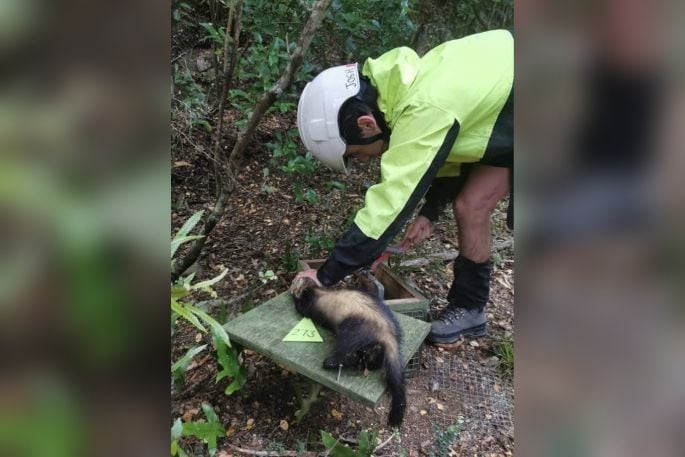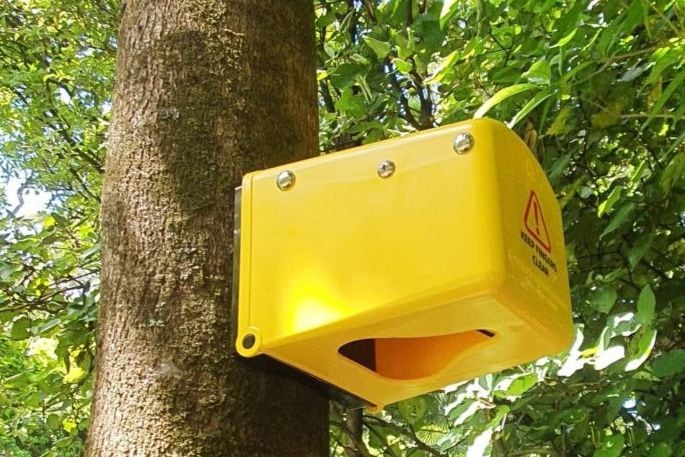With their black eye mask, ferrets might remind you of the Hamburglar. But instead of targeting hamburgers, they are adept hunters with a wide range of native birds and lizards on their menu.
According to Predator Free NZ, ferrets are pets gone rogue – they are not wild animals by nature but a domesticated species descended from wild European polecats that have been kept as pets for more than 2500 years.
“In the 1880s New Zealand farmers unleashed ferrets to curb the rising rabbit problem. That plan backfired. The ferrets had little impact on rabbit numbers, and instead, NZ now has what’s considered the largest feral ferret population on the planet.”

Trapping stoats and ferrets. Photo: Supplejack Contracting
Ferrets can only see a few feet ahead, but what they lack in vision, they make up for in smell and hearing. “This is bad news for native New Zealand wildlife, many relying on camouflage or freezing in place to escape danger.”
The kiwi, with its shaggy plumage blending in with forest undergrowth, is easily discovered thanks to a ferret’s fine-tuned nose. Ferrets have insatiable appetites, and given the chance, will “surplus kill”, meaning they will take down more prey than they can consume at once. Predator Free NZ recommend using the DoC 250 trap to trap ferrets.
Rats, possums and stoats are also pests that can destroy our native wildlife, starting from our backyard birdlife, through to endangered species, according to Predator Free NZ.
Three types of rat traps are recommended by Predator Free NZ for backyard and bush trapping. The Victor Professional rat trap is an affordable and effective trap that sits in a long wooden box, so it’s safe for children and pets.
If you don’t want to handle dead rats or reset a trap too often, the Goodnature Trap is a great option. The T-Rex rat trap is also affordable and easy to use.
For possums, the simple and effective Flipping Timmy or Trapinator traps are recommended with sweet flour paste used to lure them into the trap. Stoats can be caught by using the DoC 150, DoC 200 or Goodnature Traps. Find out more at: predatorfreenz.org

